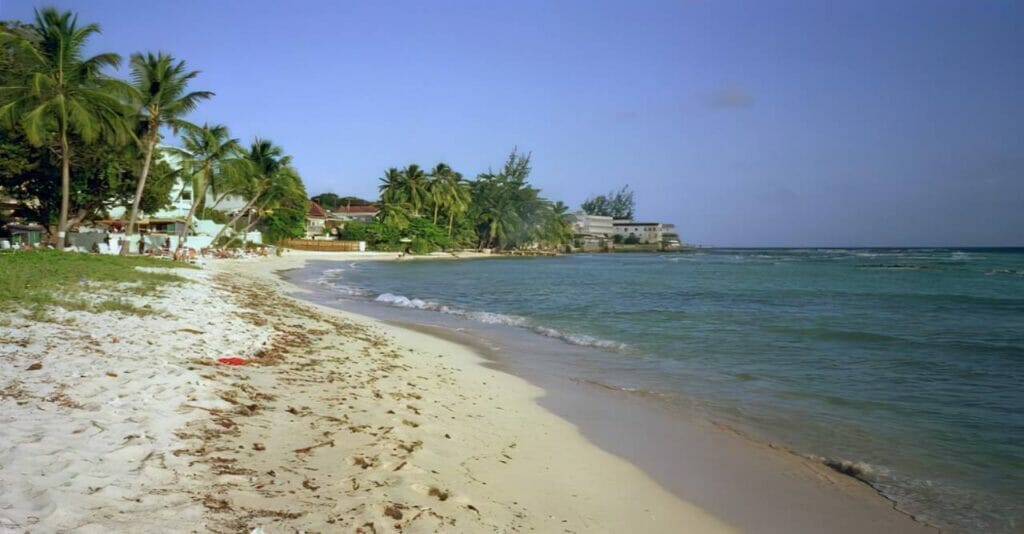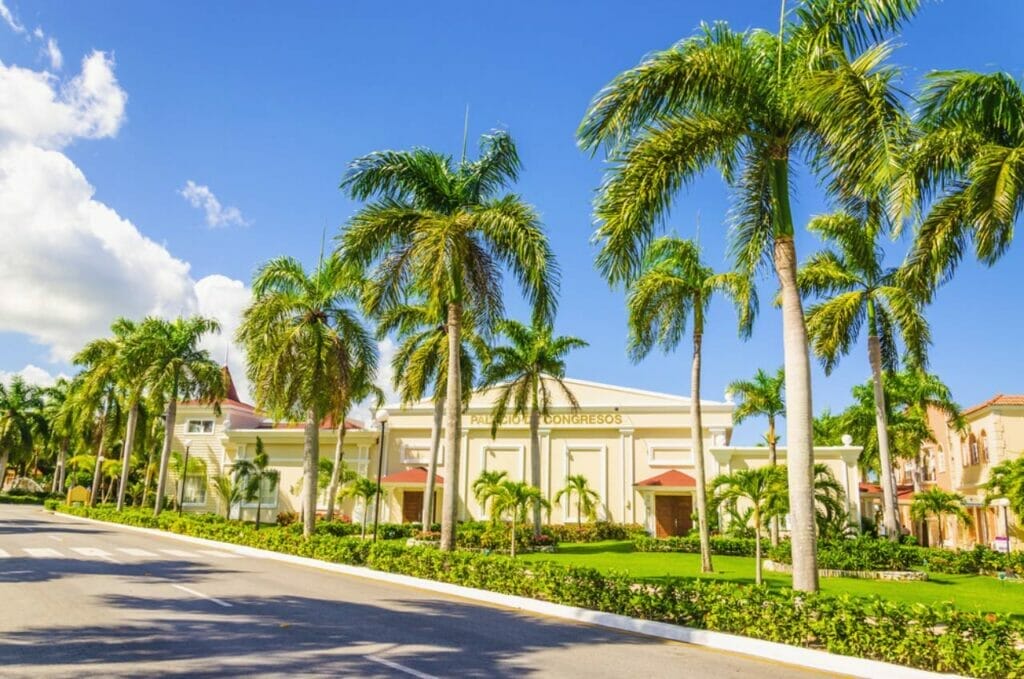Barbados Location and Climate: A Tropical Paradise Unraveled
Greetings, fellow travelers! Today, I’m going to dive deep into the magical world of Barbados and uncover how its location affects its climate. You could be questioning why this matters when it’s just another Caribbean island; after all, what significance does it have?
Well, not exactly.
There’s something special about the location and climate of Barbados that has turned it into a sought-after vacation destination. So, let’s jump right in and explore the mysteries of Barbados’ location and climate together!
| Factor | How it Affects Barbados’ Climate |
|---|---|
| Latitude | Located near the equator, Barbados experiences consistently warm temperatures throughout the year, with lows ranging from 73-79°F (23-26°C) and highs typically ranging from 84-88°F (29-31°C). |
| Trade Winds | The easterly winds aid in controlling the island’s temperature and keeping it from overheating. They also bring in moisture, contributing to the island’s lush vegetation and regular rainfall. |
| Ocean Currents | The warm waters of the Caribbean Sea help to keep Barbados’ temperature stable and ensure that it remains a tropical paradise all year round. |
| Wet Season | June to November is the time of year that Barbados receives the majority of its rainfall. The rain typically comes in short, intense bursts followed by clear skies. |
| Dry Season | December to May is Barbados’ driest period, with sunny skies, high temperatures, and little precipitation. This is considered Barbados’ busiest travel period. |
| Topography | Barbados’ topography is a mix of rugged coasts, sandy beaches, and verdant highlands, which creates distinct microclimates across the island. |
| Bajan Way of Life | The Bajan people have adapted their housing, clothing, cuisine, and lifestyle to suit the tropical climate of Barbados. Outdoor living is encouraged, and local events take advantage of the island’s beautiful weather. |
The Barbados Geography: An Overview

To truly understand the climate of this Caribbean gem, we first need to grasp its geography. Barbados is positioned at 13 degrees north of the equator and 59 degrees west of the prime meridian in the easternmost region of the Caribbean.
The island is a relatively small piece of land, measuring around 21 miles long and 14 miles broad. But don’t let the size fool you; this island packs a punch when it comes to its climate!
A Tapestry of Terrains
Barbados’ topography is a delightful mix of rugged coasts, sandy beaches, and verdant highlands:
East Coast: The wild Atlantic Ocean shapes the eastern coast of Barbados, resulting in dramatic cliffs, rocky shores, and powerful waves. This rugged terrain creates a distinct microclimate, with slightly cooler temperatures and more wind compared to the island’s west coast.
West Coast: The west coast is a sanctuary for sunbathers and fans of water sports because of its immaculate white sand beaches and serene, turquoise waters. The sheltered coast benefits from the warm Caribbean Sea and gentle trade winds, creating a picture-perfect tropical climate.
Central Highlands: The island’s interior is home to lush, rolling hills and Mount Hillaby, Barbados’ highest point at 1,115 feet (340 meters) above sea level. The elevated terrain results in cooler temperatures, creating ideal conditions for tropical flora and diverse wildlife.
A Prime Location for Tropical Bliss

Now that we know a bit about where Barbados is situated, let’s dive into why its location affects its climate.
Due to its proximity to the equator, Barbados experiences year-round tropical weather with mild temperatures and lots of sunshine.
Here’s how the island’s location factors into its climate:
- Latitude: Because Barbados is located near the equator, it experiences consistently warm temperatures throughout the year. Lows normally range from 73-79°F (23-26°C) and highs typically range from 84-88°F (29-31°C).
- Trade Winds: These easterly winds aid in controlling the island’s temperature and keeping it from overheating. They also bring in moisture, contributing to the island’s lush vegetation and regular rainfall.
- Ocean Currents: The warm waters of the Caribbean Sea help to keep Barbados’ temperature stable and ensure that it remains a tropical paradise all year round.
The Two Seasons of Barbados: Wet and Dry

While some countries experience four distinct seasons, Barbados has just two: the wet season and the dry season. Understanding these seasons is crucial for planning your trip, so let’s break them down:
The Wet Season (June to November)
This is the time of year that Barbados receives the majority of its rainfall, as the name would imply.
(But don’t worry, there is still a ton of sunshine even in the wet season.)
The rain typically comes in short, intense bursts followed by clear skies. Since Barbados is outside the main hurricane belt, it is less prone to have major storms during the wet season, which is also hurricane season in the Caribbean.
The Dry Season (December to May)
You may anticipate sunny skies, high temperatures, and little precipitation during the dry season.
Since the weather is ideal for sunbathing, swimming, and seeing the island’s various attractions, this is considered Barbados’ busiest travel period.
Adapting to the Climate: The Bajan Way of Life

The Bajan people (as the locals are called) have adapted to their island’s climate in several ways. From their housing to their cuisine, you’ll notice the influence of the tropical climate on their way of life:
- Architecture: Bajan houses are built to withstand the tropical climate, with features like wide verandas, high ceilings, and jalousie windows. These elements allow for better airflow and keep homes cool in the heat.
- Clothing: Bajans wear light, breathable fabrics to stay cool in the heat. You’ll often see them sporting vibrant colors and patterns, reflecting the island’s lively atmosphere and culture.
- Cuisine: Barbados’ tropical climate provides a wealth of fresh fruits, vegetables, and seafood. The local cuisine takes advantage of these ingredients, creating unique and flavorful dishes like flying fish, cou-cou, and macaroni pie. Plus, the hot climate makes it the perfect place to enjoy a refreshing rum punch!
- Outdoor Living: The warm weather encourages Bajans to spend a lot of time outdoors. Many local events, such as the annual Crop Over festival and Oistins Fish Fry, take place outside, allowing everyone to enjoy the island’s beautiful weather.
What This Means for Your Trip to Barbados

As we’ve established the location and climate of Barbados, it’s time to consider how this information impacts your visit.
Due to the high amounts of sunshine and warm temperatures, it is absolutely essential to use sunscreen, sunglasses, and a hat to protect yourself from the sun. Packing lightweight and breathable clothing is also recommended to stay cool in the tropical heat. Remember to bring your swimsuit for a refreshing dip in the Caribbean Sea!
Additionally, choosing the best time to visit is important!
- If you prefer drier weather and don’t mind crowds, plan your trip during the dry season (December to May).
- However, you might want to consider traveling during the wet season (June to November) if you want to escape the busiest travel period and are prepared to take a chance at some rain.
FAQ

How Is The Climate Affecting Barbados?
The climate affects Barbados by shaping its environment, vegetation, and way of life. The island’s tropical climate supports lush vegetation, a variety of wildlife, and encourages outdoor activities and events, making it an attractive tourist destination.
Which climatic zone is Barbados located?
Due to its near to the equator, Barbados experiences tropical climates, which are defined by year-round warmth, an abundance of sunshine, and distinct wet and dry seasons.
What Factors Influence The Climate Of The Caribbean?
Latitude, ocean currents, trade winds, and topography are some of the elements that affect the climate of the Caribbean. With differences in temperature, precipitation, and weather patterns between distinct islands, this region has a generally tropical climate.
What Is The Climate And Geography Of Barbados?
The climate of Barbados is tropical, with warm temperatures, abundant sunshine, and distinct wet and dry seasons. Its geography consists of diverse landscapes, including rugged coasts, sandy beaches, and lush highlands, shaped by its location in the eastern Caribbean and coral limestone foundation.
Where Is Barbados Located?
Approximately 13 degrees north of the equator and 59 degrees west of the prime meridian, Barbados is situated in the easternmost region of the Caribbean. It is the Lesser Antilles’ most easterly island.
Conclusion: Barbados Location and Climate

There you have it, fellow travelers – the secrets of Barbados location and climate revealed! This island is a true tropical paradise, thanks to its prime location, warm temperatures, and beautiful weather.
You will fall in love with the island’s charm and natural beauty whenever you come, regardless of the time you go. Pack your luggage, get some sunscreen, and get ready to explore Barbados’ captivating world!

